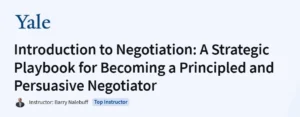What you will learn in Introduction to Engineering Mechanics Course
- Forces and Particle Equilibrium: Understand the definition of a force and how to represent it as a vector in both two (2D) and three (3D) dimensions. Learn the concept of particle equilibrium and equilibrium of systems of particles.
- Moments and Couples: Learn how to define and calculate moments and couples, which are essential concepts in analyzing the rotational effect of forces.
- Rigid Body Equilibrium: Apply the principles of equilibrium to rigid bodies, including the analysis of forces and moments acting on structures.
- Structural Analysis: Understand the methods for analyzing structures subjected to various loads, ensuring their stability and safety.
Program Overview
Forces and Particle Equilibrium
⏳ 3 hours
Introduction to the course and the definition of a force.
Representation of forces in 2D and 3D.
Concepts of particle equilibrium and systems of particles equilibrium.
Practical examples and problem-solving exercises.
Define and Calculate Moments
⏳ 2 hours
Understanding the concept of moments and couples.
Methods to calculate moments about a point and axis.
Applications of moments in engineering problems.
Rigid Body Equilibrium
⏳ 3 hours
Analysis of forces and moments acting on rigid bodies.
Conditions for equilibrium of rigid bodies.
Solving problems involving multiple forces and moments.
Structural Analysis
⏳ 4 hours
Methods for analyzing structures subjected to various loads.
Understanding internal forces and moments in structures.
Applications of structural analysis in real-world scenarios.
Get certificate
Job Outlook
- Proficiency in engineering mechanics is valuable for roles such as Mechanical Engineer, Civil Engineer, Structural Engineer, and Aerospace Engineer.
- Skills acquired in this course are applicable across various industries, including construction, automotive, aerospace, and manufacturing.
- Completing this course can enhance your qualifications for positions that require a solid understanding of mechanics and structural analysis.
Specification: Introduction to Engineering Mechanics
|
FAQs
- The course is suitable for beginners with basic understanding of high school physics and mathematics.
- Familiarity with concepts like forces, motion, and basic algebra helps but is not mandatory.
- Supplementary resources or refresher tutorials in physics can aid comprehension.
- Practical examples and exercises help learners grasp concepts even without advanced prior knowledge.
- Covers fundamental principles of statics, dynamics, and forces applicable to engineering problems.
- Helps learners analyze mechanical systems, structures, and simple machines.
- Assignments and exercises simulate real-life applications to reinforce learning.
- Additional hands-on practice may be needed for complex industrial scenarios.
- Uses algebra, trigonometry, and basic calculus to solve mechanics problems.
- Focuses on practical application of formulas rather than theoretical proofs.
- Learners with good high school math skills can follow most modules.
- Step-by-step solutions and examples help learners understand calculations clearly.
- No advanced software is required; the course focuses on conceptual understanding and problem-solving.
- Basic familiarity with graphing tools or spreadsheets can help visualize problems.
- Practical application of engineering software can be explored outside the course.
- Exercises emphasize analytical thinking and manual calculations rather than computer simulations.
- Provides essential knowledge for mechanical, civil, aerospace, and other engineering disciplines.
- Strengthens problem-solving and analytical skills important for engineering courses.
- Useful for building a strong foundation before tackling advanced engineering subjects.
- Complementing the course with practical labs or projects enhances readiness for professional work.





